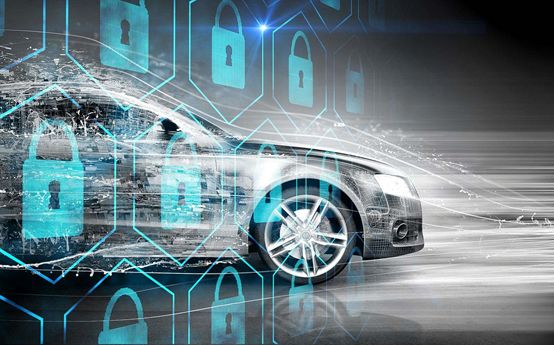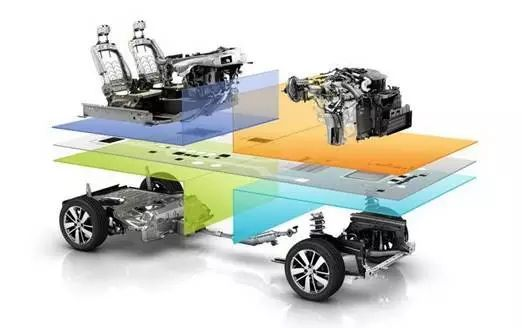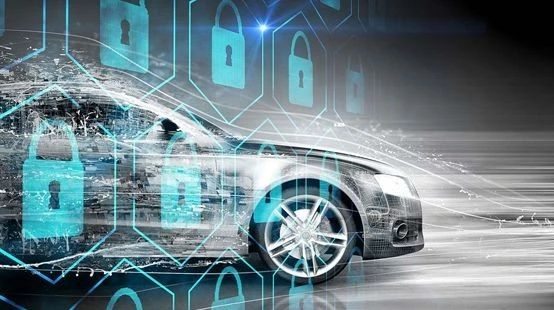A Hidden Gem in the Traditional Auto Industry: Renault-Nissan-Mitsubishi Alliance
Today we’re talking about the Renault-Nissan-Mitsubishi Alliance, a relatively unknown automaker in China that is unlikely to make headlines. The Alliance added Mitsubishi Motors to its fold in 2016 and became one of the most successful global auto groups with sales of over 10.6 million vehicles in 2017, only second to the Volkswagen Group and surpassing Toyota, making it one of the three giants in the automotive industry’s 10 million club.
From a sales standpoint, the Renault-Nissan-Mitsubishi Alliance is unquestionably successful. Renault’s acquisition of near-collapse Nissan in 1999 proved to be a double-win, and the Alliance achieved a similar feat when Renault led the acquisition of Mitsubishi, which was also on the brink of collapse. The Alliance’s inter-brand shareholding, independent operations, and collaborative sharing have elevated each brand to varying degrees.
Moreover, as a traditional auto manufacturer, the Alliance has also achieved tremendous success in the electric vehicle sector, becoming a worthy leader in the field. Nissan’s Leaf, launched two years before Tesla in 2010, has established itself in the traditional automotive world purely on electric power and is still leading the charge with its cutting-edge technology, despite a growing number of entries in the global sales rankings. Renault’s Zoe was also successful in this regard, climbing up to the top of the European sales charts since its launch in 2012. Today, Nissan Leaf and Renault Zoe are still considered the most important models in the electric vehicle market.
So how did this Alliance, which is unlikely to make headlines, become a leader in the electric vehicle market?
The first pure electric vehicle started at the feet of the Alliance
As a traditional auto manufacturer, the Renault-Nissan Alliance proposed an electric vehicle plan as early as 2005, taking the lead in electric vehicle research and development.
Of course, proposing a plan is just the first step, and the key to success lies in action.
Nissan took four years to create the world’s first pure electric vehicle. In 2009, the Nissan Leaf was publicly displayed for the first time before being sold in Japan, the United States, and Europe a year later.
This efficiency is much higher than can be achieved by today’s concept cars, and this was almost 20 years ago when the environment for electric vehicles was barren.That’s right, the world’s first affordable pure electric vehicle, with a range of 160 kilometers, entered the Japanese and European markets. From its launch until 2016, the Nissan Leaf was the best selling electric vehicle globally, being outsold only once by the Tesla Model S in 2015. Before the increase in Tesla Model S sales, the Nissan Leaf’s sales were second to none compared to other electric or hybrid vehicles.
Thus, the Renault-Nissan Alliance became the leader in the electric vehicle industry, firmly securing the top spot.
Consistent Development Tone, Unique Strategies
After Nissan launched the Leaf, Renault within the alliance did not idle, launching its first pure electric concept car Twizy Z.E. in 2009 and planning to mass produce this low-speed small electric vehicle with a 100-kilometer range and a top speed of 75 kilometers per hour in 2011.
However, unlike the smooth start of the Nissan Leaf, Renault did not have a good start in the electric vehicle industry. Whether the Twizy Z.E. or the Fluence Z.E. that followed, they did not become pioneers in the electric vehicle market. It wasn’t until the Renault Zoe was launched in 2012 that it quickly captured the European market and became the best-selling electric vehicle on par with Nissan Leaf in its second year on the market, becoming a hot electric vehicle in Europe.
In the field of electric vehicle development, Renault became not only one of the first manufacturers to participate in the Formula E racing series but also won the team championship for three consecutive years.
Although they are part of the same alliance and have a common goal of developing electric vehicles, Renault and Nissan follow different paths in their development. Nissan follows a relatively traditional charging route, while Renault leads the way in battery leasing. We mentioned this when discussing Renault Zoe previously. The alliance attempts different approaches, explores different routes, and achieves a leading position in their respective fields. The Nissan Leaf has won the global electric vehicle sales championship for consecutive years, while Renault has sold more than 100,000 Zoes by relying on its initially controversial battery leasing model.Although there are different strategies, the tone of the alliance is consistent: developing pure electric and leaving hybrid on the side.
The Renault-Nissan-Mitsubishi Alliance continues to occupy the headlines of the electric vehicle industry, albeit quietly.
Ambition of the giant
However, the global electric vehicle market has seen rapid development in recent years. Both new car entrants and traditional automakers have labeled themselves as electric vehicle developers.
The powerful and low-key alliance is no exception. After acquiring Mitsubishi Motors, the Renault-Nissan-Mitsubishi Alliance also announced its voice-the Alliance 2022 Six-year Strategic Plan:
-
The three companies share electrification, autonomous driving, and intelligent connected vehicle technologies to extend the range of electric vehicles and reduce battery costs, striving to become a leader in the global electric vehicle market.
-
Launch 12 new pure electric models before 2022. During this period, the alliance will also launch 40 models with different levels of autonomous driving capabilities, among which at least one will be a pure autonomous driving model.
-
By the end of 2022, the annual sales volume of the alliance will exceed 14 million, and the annual synergy effect will be more than 10 billion euros.
From this, we can see the ambition of this giant, which has broken into the ten-million-sales club-leader in the global electric vehicle industry.

Perhaps at the beginning of the development of electric vehicles, this alliance did become a leader, but in the past year or two, too many players have entered this field, making the competition even more intense.
After reviewing, the key to the alliance’s development is still in sharing.
The alliance will develop a new platform for electric vehicles. The next generation Nissan Livina and Renault Zoe will both come from this platform. Two main players can finally be produced on the same platform.
The alliance will develop a new universal platform for small cars to be used in mid-size cars and combined with existing modular platforms (CMF, Common Module Family).
By 2022, the alliance aims to produce more than 9 million vehicles on four shared platforms. In 2016, about 2 million vehicles shared two major platforms. Mitsubishi will also be able to use the CMF platform by 2020.

This year, the alliance also made a big move in China, partnering with Didi Chuxing to offer electric vehicles for ride-sharing services using Didi’s app in cities.Although the alliance has achieved great success, there are also controversial areas. The biggest criticism is that although the Renault-Nissan Alliance was established in 1999, there are not many achievements in synergy. Only 2 million cars have been produced on the alliance’s two shared platforms.
For example, Nissan Micra is produced in Renault’s French factory, which also produces two Renault models, Clio and Zoe. However, they do not share platforms and each operates independently.
This may be the result of the alliance’s long-standing strategy of independent operation.
When the bottleneck of brand independent operation is reached, it seems necessary to open the door to deep sharing.
Search for historical articles in Garage 42.
How did Renault Zoe become the best-selling electric vehicle in Europe through battery rental?
Toyota’s Future Posture (Part 1)
This article is a translation by ChatGPT of a Chinese report from 42HOW. If you have any questions about it, please email bd@42how.com.
